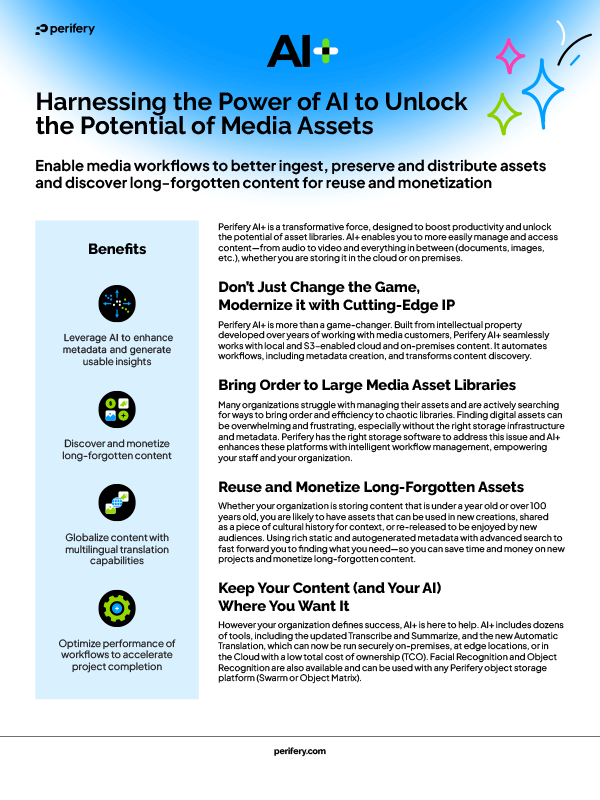
Long before the perks of having instant connectivity and boundless information at our fingertips, the world relied on more rudimental methods of gathering, storing and accessing data. Some might say it was a simpler time, when TV ran to linear schedules and media files were typically stored on some iteration of tape, including the desirable LTO (Linear Tape-Open) tapes.
However, by the turn of the millennium, things had begun to change significantly. And they continued to do so rapidly. The whole media landscape was evolving and as more content was being created, consumed, and stored, many traditional storage methods struggled with having their boundaries pushed. It wasn’t only storing the larger volumes of data that was posing a challenge; it was also the need for faster content access, unlimited scalability, and advanced data management capabilities.
To meet evolving workflow demands, object-based storage emerged as a game-changing alternative. Organizations quickly realized the potential of object storage for seamlessly managing vast amounts of unstructured data and began transitioning away from legacy file-based storage to more efficient and dynamic solutions. But now, more than two decades later, is it time to bid farewell to LTO tapes, or are they still relevant in today’s modern storage architecture?
We could end this here - but it’s not as simple as declaring that LTO is dead, and that object storage has won the storage battle. The reality is that the world of data storage is multifaceted, with various factors influencing organizations’ storage approach. With no one-size-fits-all approach, it's crucial to consider the specific requirements, budgets, data access, and long-term storage needs before making a definitive judgment.
Challenges and Considerations
The future of the LTO tape has been a debated topic for years. Although the technology provides reliable long-term archival storage, its limitations are becoming more pronounced as the years go by. Factors such as limited capacity, slower access times, dependence on manual intervention, and implications from having to upgrade every few years, are restricting organizations from reaching their full operational and monetization potential. And if you rely on rapid or real-time data retrieval, LTO probably isn’t right for you - the technology is better suited for offline or nearline storage.
The physical handling, transportation, and storing of the tapes also need to be considered. Factors like temperature, humidity, and external exposure can impact the longevity of the tapes, so appropriate conditions need to be implemented to safeguard the data. Again, access times need to be considered here; if a team member situated in a different location requires a specific data asset, you need to be prepared to locate and send the physical tapes, which, of course, adds complexity and time.
If the limitations above are deal-breakers, object-based storage could be the approach for you! Unlike LTO tapes, object storage offers unparalleled scalability, enabling effortless expansion of storage capacity with minimal intervention. Data access and retrieval times are significantly faster, and with data stored as objects alongside associated metadata, indexing and searching is more streamlined. Additionally, object storage provides instant access to all data meaning you can utilize your assets straightaway, regardless of location or time-zone.
A combined approach
Combining LTO and object storage can be a viable option. LTO can be utilized for infrequently accessed and archival data, while object-based storage remains available for data that requires frequent access and immediate availability. Automating the movement of data between the storage platforms can help to optimize performance, cost-efficiency, and data accessibility.
So, we pose the question again: is there still a place for LTO storage in modern workflows? Yes, but it should be combined with a solution that provides efficient access and management for active data. Integrating LTO with a future-proof object storage solution will help organizations meet their evolving demands, with object storage acting as the gateway to active data and LTO providing long-term archival storage. Alternatively, you could simply remove the LTO element and embrace the benefits of a full object-based storage approach.
Whichever path you choose, your focus should be on adopting a solution that best aligns with your data management goals, scalability needs, and future growth plans. Learn how Perifery can help with content archive, preservation, and distribution, supporting you to store smarter and monetize faster.
